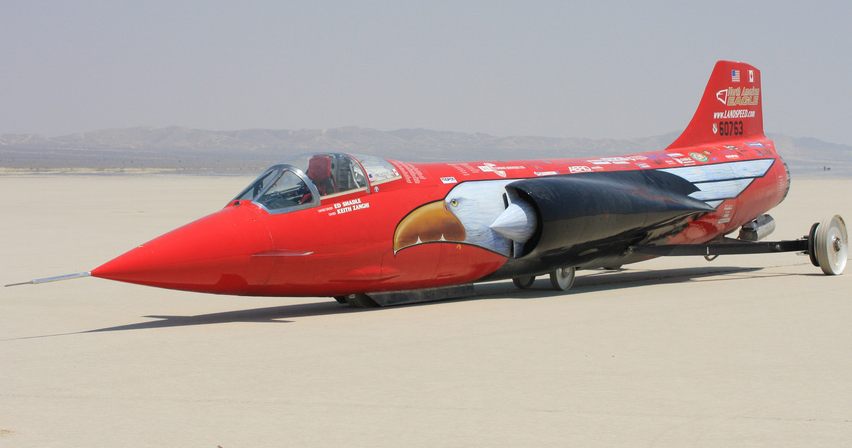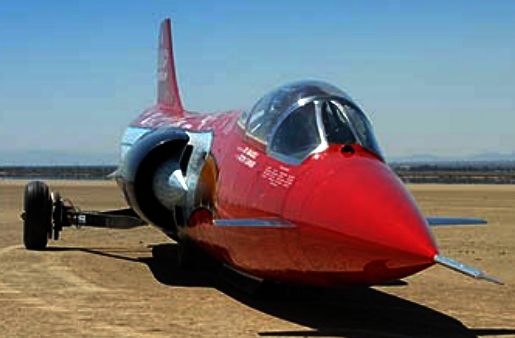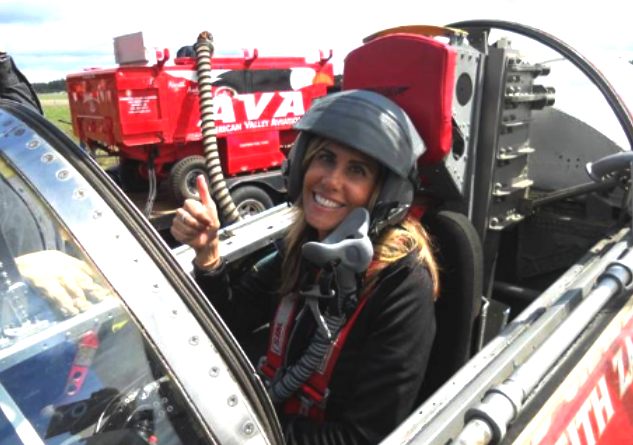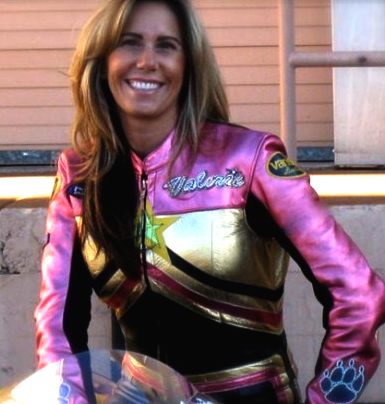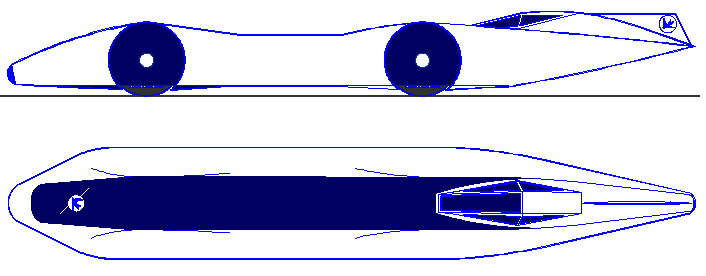|
NAE North American Eagle
|
||||||
|
HOME | AUTOMOTIVE | BLUEPLANET | ELECTRIC CARS | FORMULA E | ENERGY | INSURANCE | INDEX | SOLAR CARS |
||||||
|
The Challenge:
The
Solution: Building a data acquisition system based on the NI cDAQ-9188XT chassis and LabVIEW software, which reduced overall setup time and simplified the interface between the sensor wiring harness and the computer.
The Quest to Break the Land Speed Record
North American Eagle (NAE) is a group of dedicated men and women from the U.S. and Canada who have set out to build the world’s fastest automobile. Ultimately, our goal is to test the capability of a land-based vehicle to safely transition through supersonic speed and to break the current world land speed record of 763 mph (341 m/s) set in 1997. This project could shape future high-speed rail technologies, provide more information about the ground effects of high-speed aircraft during landing, and suggest new deceleration methods for high-speed vehicles.
Safety is our highest priority and breaking the land speed record should not create unacceptable risks to the driver, crew, or spectators. As a result, we perform extensive testing on the vehicle (the fuselage of a Lockheed F-104A-10 Starfighter, powered by a turbojet engine) before, during, and after test runs. Over the past eight years, we conducted 33 test sessions under various extreme environmental conditions.
This case study outlines the data acquisition system and processes supporting the next test of the NAE vehicle, which is scheduled for October 2013 in the Alvord Desert. In this test, the vehicle will achieve a speed of about 635 mph.
Test Objectives and Challenges
Our data acquisition system needs to observe car handling characteristics as we gradually increase speed, and it must reliably collect:
* Aerodynamic data for comparison with values predicted by computational fluid dynamics * Stress and strain structural data on aft suspension system components * Video data * Data on the front wheel steering system and response
Because we operate in very harsh conditions, we need exceptional performance from all systems in the NAE testing program. Extremely fine and highly corrosive airborne alkaline dust can limit daylight visibility to less than six feet. In addition, temperatures in the desert can reach 118 °F and there is high RF static noise from turbine and ignition/afterburner spark generators. The system must also be able to withstand 20 g in g-forces from unforeseen track aberrations. For comparison, the space shuttle reaches about 3 g during launch, and a Formula 1 car can reach up to 5 to 6 g during a race.
The team uses the Windows Remote Desktop application to “ride along” as the NAE vehicle travels from the base camp, to the beginning and end of the 14-mile course, and back to the base camp. We deploy a portable broadband wireless Ethernet network that is self-contained and covers a wide area. The integrated data acquisition equipment on board the NAE vehicle provides local collection of run data without telemetry. We control the computer, including program initiation, data acquisition triggering, data download to onboard memory, visual monitoring of data, and file saving, via Remote Desktop. Effectively managing these systems remotely as they ride with the NAE vehicle in harsh conditions creates significant challenges. The logistics of setting up and maintaining overall system integrity for days on end makes things even more difficult.
The NI cDAQ-9188XT chassis is a key element of our carefully designed data acquisition system. It provides multifunctional I/O in a small package and easily integrates with our onboard and remote computing and communication systems. The following table lists the data acquisition channel assignments.
NI Multifunction I/O via the cDAQ-9188XT
Channels Sensors Input Data
3 1 PCB triaxial accelerometer NI 9234 Front wheel carriage vibration 6 2 PCB high-G accelerometers NI 9234 Midwheel vibration 1 Parker hydraulic pressure transducer NI 9206 Front suspension compression 1 SpaceAge Control string potentiometer NI 9206 Front suspension compression 1 Differential pressure transducer NI 9206 Mach 1 Strain gage/custom sensor assembly NI 9206 Steering position 3 Strain gages (bridge amplifiers) NI 9206 Rear suspension strain loads 1 Linear potentiometer voltage divider NI 9206 Steering command position 13 Absolute air pressure transducers NI 9206 Static pressures, fuselage 3 Endevco piezoresistive pressure transducers NI 9206 Static pressures, fuselage 1 Output for bridge amplifier zero-set NI 9481 N/A
Why We Chose NI CompactDAQ
For the last eight years, we gathered data during our test runs with equipment designed more for a laboratory environment than for a mobile situation. We spent a lot of time designing and building special chassis, adapting signal wires to 25-pin interfaces, and creating power systems for our complete data acquisition system. We used complicated Ethernet configurations and triggering methods to combine three separate laboratory-grade data acquisition units into a single system. Programming the system was fairly easy, but it took a great deal of time.
Over the past two years, the system became unreliable and replacement parts were nonexistent. We needed something we could put together quickly that also met all of our varied requirements, including being much smaller and easier to program, which made the rugged NI CompactDAQ platform the obvious choice. NI offers the widest selection of mixed I/O in a single package that is easily brought together with an object-oriented programming environment. The company is well-known for its reliable, accurate laboratory equipment, so choosing that same excellent equipment in a hardened, portable package was a terrific solution.
Cutting Time, Cost With the cDAQ-9188XT
In the October test, we expect to see aerodynamic readings from the static ports with values very similar to the finite element method (FEM) model we have been working with. We need to validate the model against the real-world figures obtained by the NI CompactDAQ system. We hope to catch anything we did not anticipate to provide data-driven confidence in the calculations we do for higher speeds. If all goes well, we’ll attempt to break the record in fall 2014.
Overall, we are extremely satisfied with the cDAQ-9188XT. We turned on the power for the first time and immediately started acquiring data without spending hours troubleshooting wiring, programming, or bugs. The interface with our sensor wiring harness and with the computer was very easy. The snap-in modules made it simple to add a mixed selection of I/O quickly. The NI LabVIEW programming environment worked flawlessly as we developed the desired data acquisition configuration. Time is money, and I’d estimate that I saved $200,000 of my time by implementing the NI CompactDAQ system.
LINKS
http://sine.ni.com/cs/app/doc/p/id/cs-15631?espuid=CNATL000013274285 http://landspeed.com/project-updates/91-may-5-2012
A taste for adventure capitalists
The world's fastest electric car: 350mph + using energy from nature. Featuring built in battery cartridge exchange, charged using renewable solar energy. Partners & driver sought for the 2016 season.
|
||||||
|
The
content of this website is copyright © 1991 and 2013 Electrick
Publications. All rights reserved. The bluebird logo
|
||||||
